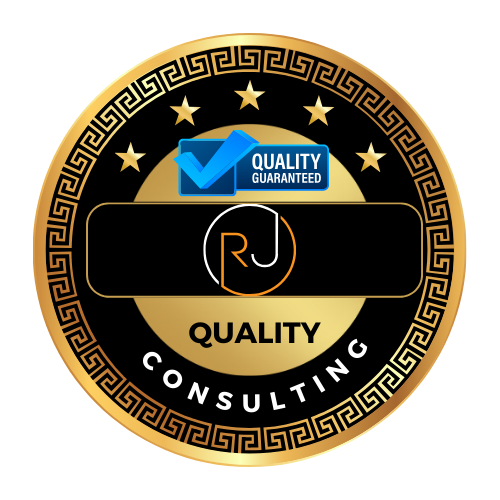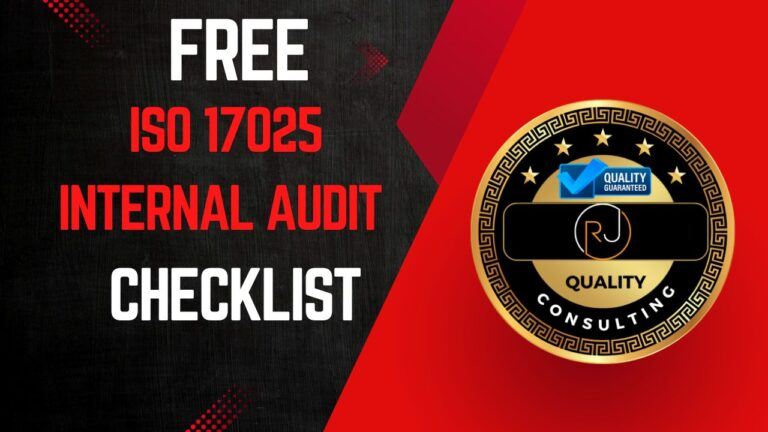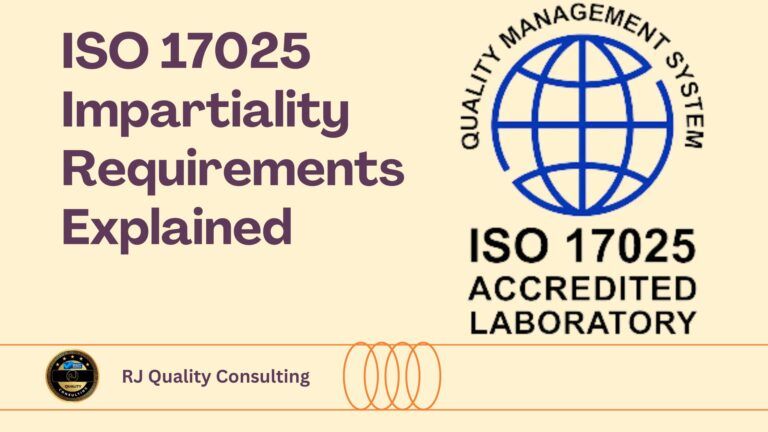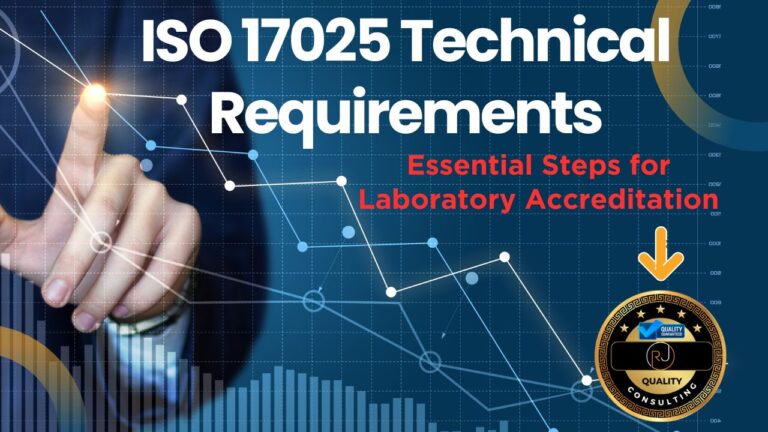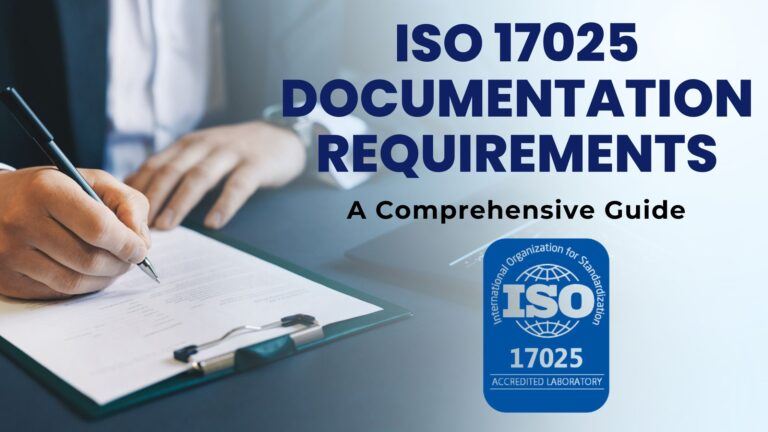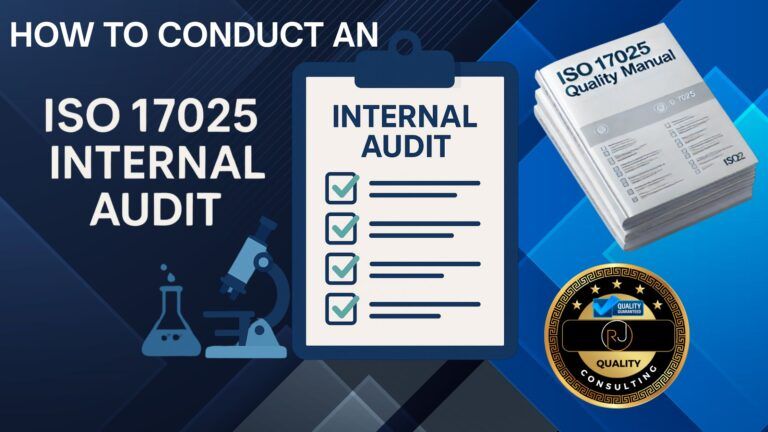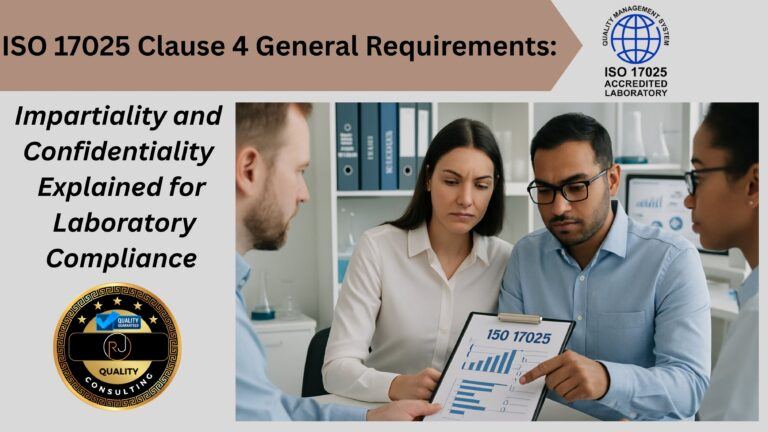ISO 17025 Clause 6: Resource Requirements Explained
If you work in a lab, you know how much the right people, equipment, and environment matter. ISO 17025 Clause 6 spells out exactly what resources a laboratory needs to make sure results are reliable and technical work is valid. This part of the standard covers everything from staff training to equipment maintenance, making it clear what’s expected for your lab to meet international quality requirements.
Nailing these “resource requirements” isn’t just about ticking boxes for an audit. It’s how you keep your lab running smoothly and make sure every test you do can actually be trusted. Real-life examples show how following Clause 6 can make your daily lab grind a bit more straightforward—and actually improve things.
🎥 Watch: ISO/IEC 17025 Clause 6 – Resource Requirements Explained
If you’re struggling to understand how ISO/IEC 17025:2017 defines and evaluates laboratory resources, this video will walk you through each key requirement in Clause 6. From personnel competency and facilities to equipment calibration and metrological traceability, I explain what assessors look for and how to stay compliant.
📘 ISO/IEC 17025 Quality Manual Template
Accelerate your lab’s accreditation process with our comprehensive Quality Manual Template, designed to align with ISO/IEC 17025:2017 standards.
- Fully editable and customizable to fit your laboratory’s needs.
- Includes all necessary procedures, forms, and policies.
- Structured to facilitate easy implementation and compliance.
- Developed by experts with extensive ISO/IEC 17025 experience.
Key Takeaways
- Clause 6 details all resource needs for labs under ISO 17025.
- Proper resources keep your lab’s work consistent and accurate.
- Real lab examples show exactly how these requirements play out.
What Does ISO 17025 Clause 6 Cover?

Clause 6 of ISO 17025 lays out the resource requirements your lab needs to hit for valid results in testing, sampling, and calibration.
It covers several key areas:
- Competence of Personnel: You’ve got to make sure all staff are trained and competent for what they do. This goes for chemical analysis, equipment calibration, proficiency testing—whatever their job is.
- Facilities and Environmental Conditions: Your lab needs proper, controlled spaces that fit the testing and sampling you do.
- Equipment: All tools and equipment should fit their purpose and get calibrated regularly. You’ll need records for calibration and maintenance for your quality system.
- Services and Externally Provided Resources: If you use outside services or products, like calibration or chemicals, you have to check that they meet standards.
- Resource Management: You need to keep tabs on materials and supplies so your lab activities stay on track and results stay solid.
Here’s a quick table for clarity:
| Area | Main Focus |
|---|---|
| Personnel | Competence and training |
| Facilities | Suitable and controlled environment |
| Equipment | Maintenance, suitability, calibration |
| Services | Assessment of external suppliers |
| Resource Management | Proper supply and material tracking |
Subclauses Breakdown With Context

Clause 6 of ISO 17025 sets the rules for resources that help labs prove technical competence. It’s about staff qualifications, good workspaces, reliable equipment, and having control over suppliers and measurement traceability.
ISO 17025 Clause 6.1 – General
This part says you need all the right resources for testing and calibration—people, lab spaces, equipment, reference materials, and even services from outside. The whole point is to support accurate, reliable results.
Figure out what your lab actually needs for its work. Keep records of what you’ve got, who uses it, and how it fits into your quality system. If something’s missing or not up to scratch, your results might suffer.
ISO 17025 Clause 6.2 – Personnel
Your staff need both technical chops and the right qualifications. ISO 17025 expects you to prove employees and contractors are up to the job for their specific roles.
You’ll want current job descriptions, records of education, training, hands-on experience, and any certifications. Keep an eye on staff performance through supervision, reviews, and training. Only let trained and authorized staff handle things that affect test results.
Here’s a table of what matters:
| Requirement | Example |
|---|---|
| Job descriptions | Clear task lists |
| Training records | Certificates, logs |
| Competence checks | Skills assessments |
| Supervision | Performance reviews |
ISO 17025 Clause 6.3 – Facilities and Environmental Conditions
A safe, clean, and organized lab cuts down on errors. ISO 17025 wants you to control environmental factors like temperature, humidity, dust, vibration, and lighting—since those can mess with your results.
Document environmental conditions for each part of the lab. Check regularly to keep things in range, and keep logs if anything changes. Set up procedures for monitoring and controlling these settings, especially for tests that are sensitive to the environment.
Stop cross-contamination by setting rules for sample handling and separating incompatible activities. If some areas need restricted access, only let in the right people.
ISO 17025 Clause 6.4 – Equipment
This subclause is all about managing lab equipment, from balances to spectrometers. Equipment needs to fit its use and deliver accurate results.
Keep equipment logs—identity, location, calibration status, maintenance, service records. Mark anything out of service or needing repair so no one uses it by accident. Every item should have an ID and a calibration program, especially if it affects measurement accuracy.
Routine checks and maintenance help avoid breakdowns. Document every bit—adjustments, maintenance, when you take something out of service—so you keep things reliable and traceable.
ISO 17025 Clause 6.5 – Metrological Traceability
Metrological traceability links your measurements to national or international standards. Use calibrated equipment and certified reference materials whenever you can.
Keep clear records for your calibration program—sources, intervals, certificates. Only use calibration providers that meet ISO/IEC 17025 or other approved standards. If there’s uncertainty in measurement, take it into account and show it in results when it matters.
Quick checklist:
- Use certified reference materials and standards.
- Keep calibration certificates and records.
- Calculate and report measurement uncertainty.
- Check traceability for every key measurement.
Ensuring metrological traceability is more than just using calibrated equipment. Laboratories must link their measurements to national or international standards through a documented unbroken chain. For a deeper understanding of how accreditation bodies evaluate traceability, refer to the ILAC policy on metrological traceability
ISO 17025 Clause 6.6 – Externally Provided Products and Services
Labs rely on external suppliers for calibration, reference materials, and sometimes specialized maintenance. ISO 17025 expects you to show you control these outside providers.
Evaluate suppliers before using them—look at their qualifications, accreditations, past work. Set clear acceptance criteria and keep records for each product or service. Contracts or agreements should spell out your requirements, especially for things that impact measurement accuracy or quality.
Review supplier performance regularly and stick with those who meet your standards. Keep an updated list of approved suppliers. That way, you keep traceability and reliability—even for stuff you source outside your lab.
Frequently Asked Questions
ISO/IEC 17025 Clause 6 lays out what your lab has to do to make sure resources like staff, equipment, and facilities actually meet standards for reliable, repeatable results. This means qualifications, maintenance, documentation, and managing suppliers all matter.
What specific personnel qualifications are required under Clause 6 of ISO 17025?
Everyone needs to be competent for their assigned work. That means having job descriptions, training records, education, skills, and experience documented for every person.
Employees and contractors both need regular assessment and supervision. You’ll want to document training, supervision, and ongoing competency for your staff.
How does ISO 17025 Clause 6 mandate laboratory equipment maintenance?
All equipment that affects lab results needs proper maintenance and calibration. Use traceable standards—ideally those tied to SI units.
Keep records for all maintenance, calibration dates, and results. Clearly mark any equipment that’s faulty or uncalibrated, and don’t use it for accredited testing.
In what ways must a lab demonstrate resource competence according to ISO 17025?
You need to show that your lab’s resources—personnel, facilities, equipment—fit their purpose. Prove it with up-to-date records, ongoing performance checks, and validated methods.
Auditors will check for evidence that your lab can consistently produce valid, reliable results, backed by your quality management system.
What are the requirements for environmental conditions as per ISO 17025 Clause 6?
Environmental conditions can’t mess up your test or calibration results. You’ve got to monitor and control things like temperature, humidity, and cleanliness.
Document that your controls fit the requirements for each procedure. If environmental changes could impact results, address and note them.
How should a laboratory manage outsourced work to comply with ISO 17025 resource requirements?
If you outsource any lab work, use competent suppliers and monitor how they perform. Set up contracts or agreements that specify your quality and traceability needs.
Records should show that outsourced services meet the same standards as your own lab activities.
What documentation is necessary to show compliance with ISO 17025’s resource provisions?
Document everything related to resources—personnel files, training records, equipment logs, maintenance schedules, calibration certificates, and approved supplier lists.
Review and update your documentation regularly. Keep it accessible so auditors or accreditation bodies can check compliance with the standards and your quality system.
Need Complete Documentation for Clause 6?
Clause 6 of ISO/IEC 17025 covers everything from personnel competency and facilities to metrological traceability and equipment calibration. If you’re unsure how to cover all the required procedures and records — our ISO/IEC 17025 Procedures Template Package has it all.
This package includes procedures, forms, and guidance documents for:
✅ Personnel competency and records (6.2)
✅ Facility and environmental control (6.3)
✅ Equipment selection, maintenance, and calibration (6.4 & 6.5)
✅ Metrological traceability requirements (6.5)
✅ External service providers (6.6)
…and more — all designed to meet ISO/IEC 17025:2017 requirements.
Conclusion

ISO 17025 Clause 6 is all about resource requirements in the lab—people, equipment, facilities, and support systems.
To meet these, your lab needs to prove staff are competent, equipment is fit and maintained, and materials get handled right.
Document roles, training, and supervision. Even simple job descriptions and training records help show you’re on track.
Key Reminders:
- Check staff skills and training often.
- Maintain equipment and keep clear records.
- Keep your lab space suitable and safe.
Every requirement here is about making sure your lab results are reliable. When your resources are in order, you can work with a lot more confidence—and people will trust your results, too.
Also Explore
| Clause | Topic | Link |
|---|---|---|
| Clause 4 | Impartiality & Confidentiality | ISO 17025 Clause 4 |
| Clause 5 | Structural Requirements | ISO 17025 Clause 5 |
| Clauses 6 and 7 (Bonus Video Blog) | Resource Requirements | ISO 17025 Clauses 6 and 7 |
| Clause 7 | Process Requirements | ISO 17025 Clause 7 |
| Clause 8 | Management System Requirements | Read Article |
Here’s a quick list of connected topics you might want to dig into:
- Personnel competence and training
- Facility and environmental controls
- Equipment calibration and maintenance
- Management systems
Honestly, keeping track of everything can get overwhelming, so a table like this might come in handy:
| Requirement Area | Example |
|---|---|
| Personnel | Staff training record |
| Equipment | Calibration certificate |
| Facilities | Lab layout plan |
| Materials | Chemical inventory list |
🕒 Book Your Free 45-Minute Consultation
Have questions about ISO/IEC 17025 or ISO 9001 implementation or accreditation? Schedule a free 45-minute consultation with me to discuss your Company or laboratory’s needs and how we can achieve compliance together.
Schedule Your Consultation